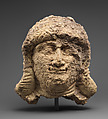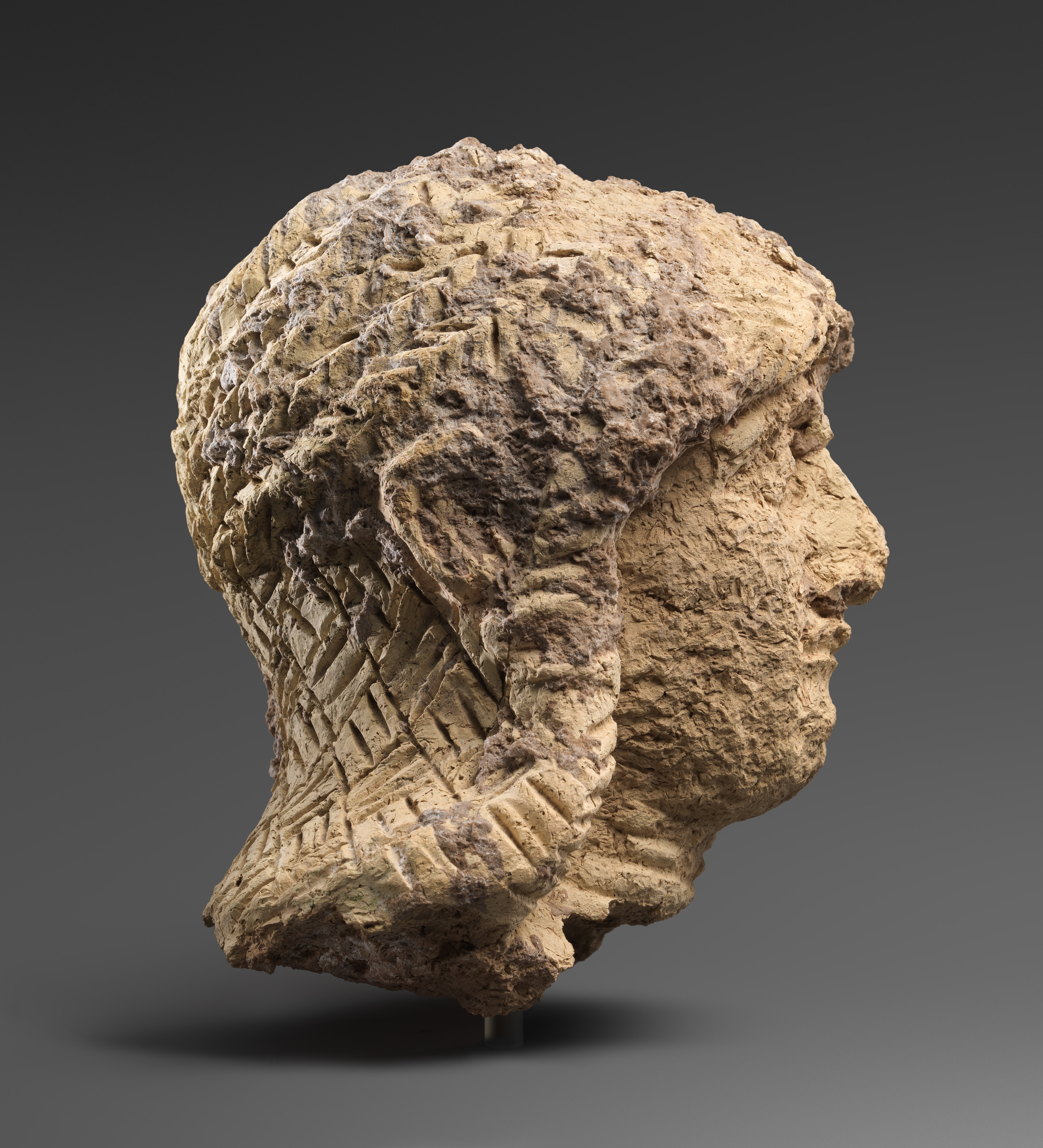Head of a female
Not on view
This head, broken at the neck and hollow on the inside, depicts a female figure with shoulder length hair arranged in bands of braids around her head and alongside her face. She has large eyes, a small thin smile, and large ears protrude from her hair. Seven bands around her neck represent a multi-strand necklace. The head appears to have been hand-formed out of wads of clay, then fired and painted. The quality of the clay – tempered with organic matter – may account, in part, for its poor preservation. Based on incrustations of dirt that appear only on the exterior surface and not on the bottom break, it seems likely that the head was originally part of a larger figure.
Several terracotta heads and busts are known from both ancient Iraq and Iran in the early second millennium B.C. It seems likely that many of these terracottas were originally part of a larger, perhaps composite, full body representation. Like this figure, they often have attentive expressions, and some are shown with clasped hands. Such expressions and postures call to mind the smaller stone worshiper figures of the Early Dynastic period. We know very little about votive figures in the early second millennium B.C., but we do have evidence for various clay figures that served as temple guardians.
Due to rights restrictions, this image cannot be enlarged, viewed at full screen, or downloaded.
This artwork is meant to be viewed from right to left. Scroll left to view more.



